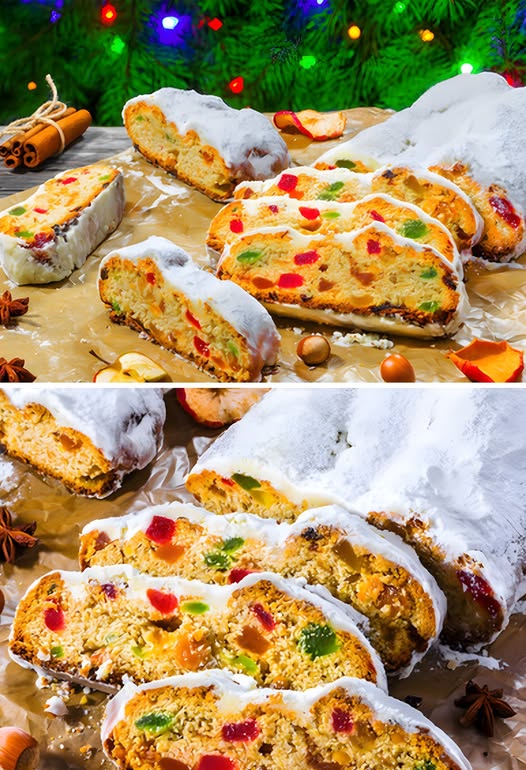ADVERTISEMENT
# **Christmas Stollen: The Timeless German Dessert**
As the holiday season approaches, one dessert that stands out in many homes is the iconic **Christmas Stollen**. Known for its rich history, distinct flavor, and heartwarming symbolism, this German dessert has become synonymous with Christmas across the globe. Whether enjoyed during a festive breakfast, served with a cup of tea, or offered as a gift to loved ones, **Stollen** is an integral part of holiday celebrations, particularly in Germany. This article delves into the history, cultural significance, variations, and step-by-step guide to making a traditional **Christmas Stollen**. We will also explore the evolution of this dessert and why it continues to be cherished today.
—
## **What is Christmas Stollen?**
**Stollen** is a traditional German fruitcake-like bread, often filled with dried fruits, nuts, spices, and sometimes marzipan. It is a yeast-leavened cake that is typically enjoyed around Christmas time. This rich, dense cake has a distinct shape, usually resembling a loaf with a fold in the center, symbolizing the swaddling clothes of the baby Jesus. The outer coating of powdered sugar adds a snowy, festive appearance, further emphasizing its holiday connection.
Though it originated in Germany, the popularity of **Stollen** has spread worldwide, and it is often baked and enjoyed in various countries during the Christmas season. Despite its simple ingredients, the combination of flavors, textures, and symbolic significance makes **Stollen** a beloved treat that encapsulates the spirit of the holidays.
—
## **The History and Origins of Stollen**
### **A Sweet Tradition Born in Germany**
The history of **Stollen** dates back to the 14th century in Germany, particularly in the region of **Dresden**, where it became closely associated with the **Dresden Stollen Festival**. The first mention of Stollen appeared in historical records in 1329 when the people of Dresden made offerings to the church during the Advent season. These early versions of Stollen were quite different from the version we know today. They were simple breads made with flour, water, and yeast, and due to the Catholic Church’s prohibition on using butter and milk during Advent, the cakes were made with little fat.
As time passed, the recipe evolved, and ingredients such as butter, sugar, and spices were gradually introduced, making the cake richer and more flavorful. By the 15th century, **Stollen** began to resemble the modern-day version, with the addition of dried fruits, nuts, and marzipan.
### **The Symbolism of Stollen**
There is a significant symbolic meaning behind the shape and the ingredients used in **Stollen**. The loaf-like shape, with the central fold, is said to symbolize the swaddling clothes of the baby Jesus, making it a religious symbol of the Christmas story. The **powdered sugar** that coats the outside represents the snow of winter or, in some interpretations, the purity of Christ.
The combination of dried fruits, such as raisins, currants, and candied citrus peel, signifies the gifts of the three wise men. Marzipan, which is sometimes used in the center of the Stollen, is said to represent the richness of the holiday season and the luxurious foods that were reserved for kings and nobility in medieval Europe.
For Complete Cooking STEPS Please Head On Over To Next Page Or Open button (>) and don’t forget to SHARE with your Facebook friends
